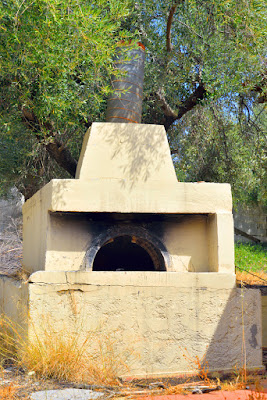Understanding Ground Fault Circuit Interrupters
In an effort to safeguard more electrical installations, the National Electric Code (NEC) has been expanding the requirements for Ground Fault Circuit Interrupters (GFCI) since 1971. Initially, GFCI protection was only required for temporary wiring at construction sites and in dwelling unit bathrooms. However, in recent years code requirements have been expanded to include many other areas such as commercial occupancies, fountains and swimming pools, and more. Keep reading to learn more about GFCI protection and the requirements for a commercial kitchen from Fast Fix LLC.
Ground Fault Circuit Interrupters, or GFCI, is the only protection device designed to protect people against electric shock from an electrical system. The NEC defines it as "a device intended for the protection of personnel that functions to de-energize a circuit or portion thereof within an established period of time when a current to ground exceeds some predetermined value that is less than that required to operate the overcurrent protective device of the supply circuit."
A GFCI protection device monitors the imbalance of current between the circuit's ungrounded (hot) and grounded (neutral) conductor. It does not monitor the grounding conductor, and therefore, will still operate in a circuit without a ground. In a typical 2-wire circuit, the current returning to the power supply will be equal to the current leaving the power supply, with the exception of some small leakage. If that difference in power supply coming vs going exceeds 5mA, the sold-state circuitry opens the switching contacts and de-energizes the circuit. As long as the GFCI is in proper working order, this will always happen.
Per the code, you must install GFCI protection for all 15A and 20A, 125V receptacles located in bathrooms, rooftops and kitchens in commercial/industrial facilities. For dwelling units, GFCI protection is only required for receptacles installed to serve dwelling unit kitchen counter surfaces, but for commercial kitchens, all receptacles require GFCI protection. In addition, it's required to install a 15A or 20A, 125V receptacle outlet within 25 ft of heating, air conditioning and refrigeration equipment. Depending on how old your commercial kitchen is, it's important that you make sure it's up to code. If you're working in a previously unprotected location that now requires GFCI protection, it's no longer acceptable to replace an old, unprotected receptacle with a new, unprotected receptacle. You must install a GFCI-protected device. These requirements are in place to protect the public and construction workers alike. Consult an electrician if you're concerned with the GFCI protection or lack thereof in your commercial kitchen.
At Fast Fix LLC, we're here to help ensure your commercial kitchen is in proper working order. We specialize in commercial cooking equipment, HVAC, refrigeration, electrical, gas, plumbing, light carpentry work and bar equipment. With over 200 years combined experience, we know a thing or two about restaurant equipment repair in Missouri.
What is GFCI Protection?
Ground Fault Circuit Interrupters, or GFCI, is the only protection device designed to protect people against electric shock from an electrical system. The NEC defines it as "a device intended for the protection of personnel that functions to de-energize a circuit or portion thereof within an established period of time when a current to ground exceeds some predetermined value that is less than that required to operate the overcurrent protective device of the supply circuit."
How GFCI Protection Devices Work
A GFCI protection device monitors the imbalance of current between the circuit's ungrounded (hot) and grounded (neutral) conductor. It does not monitor the grounding conductor, and therefore, will still operate in a circuit without a ground. In a typical 2-wire circuit, the current returning to the power supply will be equal to the current leaving the power supply, with the exception of some small leakage. If that difference in power supply coming vs going exceeds 5mA, the sold-state circuitry opens the switching contacts and de-energizes the circuit. As long as the GFCI is in proper working order, this will always happen.
Commercial Occupancies Requirements
Per the code, you must install GFCI protection for all 15A and 20A, 125V receptacles located in bathrooms, rooftops and kitchens in commercial/industrial facilities. For dwelling units, GFCI protection is only required for receptacles installed to serve dwelling unit kitchen counter surfaces, but for commercial kitchens, all receptacles require GFCI protection. In addition, it's required to install a 15A or 20A, 125V receptacle outlet within 25 ft of heating, air conditioning and refrigeration equipment. Depending on how old your commercial kitchen is, it's important that you make sure it's up to code. If you're working in a previously unprotected location that now requires GFCI protection, it's no longer acceptable to replace an old, unprotected receptacle with a new, unprotected receptacle. You must install a GFCI-protected device. These requirements are in place to protect the public and construction workers alike. Consult an electrician if you're concerned with the GFCI protection or lack thereof in your commercial kitchen.
At Fast Fix LLC, we're here to help ensure your commercial kitchen is in proper working order. We specialize in commercial cooking equipment, HVAC, refrigeration, electrical, gas, plumbing, light carpentry work and bar equipment. With over 200 years combined experience, we know a thing or two about restaurant equipment repair in Missouri.
Fast Fix LLC. Restaurant Equipment Service & Repair -
One Call Does It All!
Fast Fix LLC. Restaurant Services
3362 State Road JJ
Kingdom City, MO 65262
Columbia: 573-544-0456
St. Louis: 636-327-8349
Website: www.FastFixLLC.com







Comments
Post a Comment